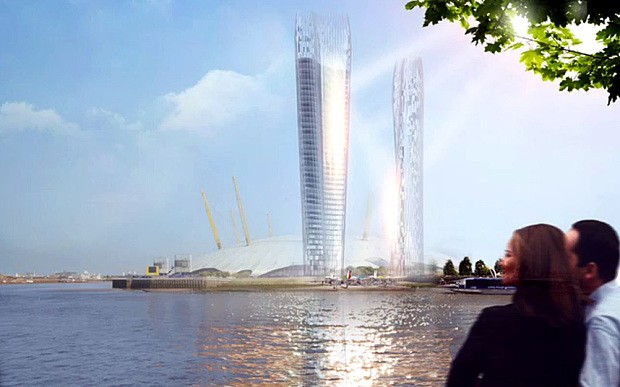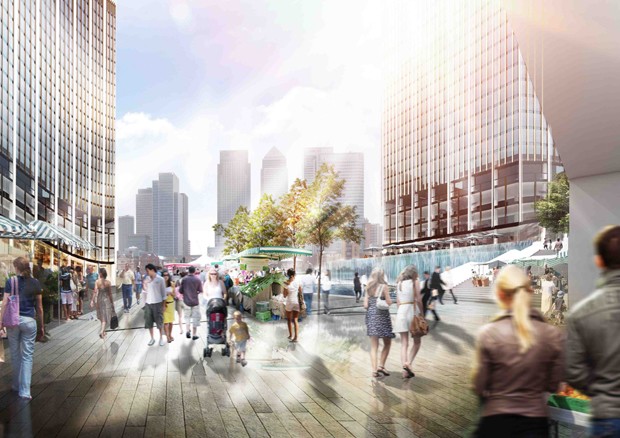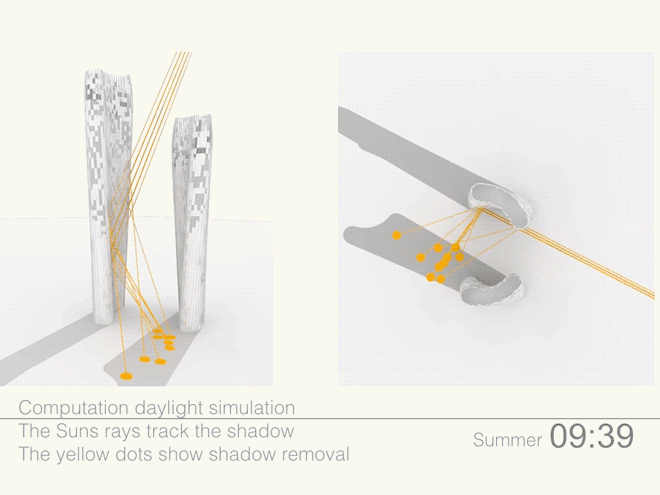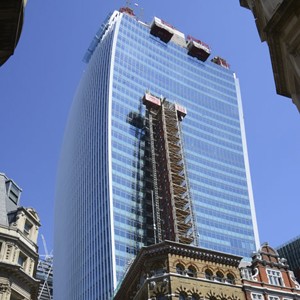The creation of skyscrapers and tall buildings has always included discussions about shadowing impacts. A new 32-storey tower in Sydney by Hassell, for instance, is designed with a curving northern façade to avoid overshadowing the nearby Martin Place and Hyde Park Barracks, while Dutch architects MVRDV’s unique twisting ‘tower with waist’ in Vienna minimises the building’s shadow cast.
In London, architects at NBBJ have come up with a new design for a mixed-use development in the city’s Greenwich Peninsula involving two buildings with curved mirrored surfaces that reflect light at each other and down onto the street below.

According to a report by Wired, the concept works on the idea that the glass surface of the northern building will reflect light down into the shadow cast by its southern partner. This occurs throughout the day because of the specific curve of the glass, which allows the reflected light to follow the shadow’s movement.
“The relationship between the sun and shadow is the relationship between the two buildings,” said Christian Coop, design director at NBBJ.

The carefully defined shape of the glass was created with design software Rhinoceros, which generated a range of designs that maximise the light reflected onto the ground based on a variety of building requirements, such as footprints for offices and living spaces.

Rhinoceros tests every possible shape and selects the best ones, and after several input adjustments by NBBJ, including giving more space to the lower levels, produced a design that practically could work – a structure with a thin base that expands as the tower rises, and which would redirect sunlight so that shadows at the base of towers are visibly reduced by up to 60 per cent.
 However, unlike the infamous Walkie-Talkie in London (pictured left) whose curved glass facade actually melted vehicles parked on a nearby street in 2013, NBBJ says the reflected light from their towers will be diffused.
However, unlike the infamous Walkie-Talkie in London (pictured left) whose curved glass facade actually melted vehicles parked on a nearby street in 2013, NBBJ says the reflected light from their towers will be diffused.
The project is about “improving the quality of our urban environment... finding a way in which we can have the tall buildings we need without losing natural light on the areas below,” said Coop.
“The key to getting tall buildings right is at the skyline level and the base,” he told The Telegraph.
“The design ensures that the area between the towers is bright and pleasant, so is more likely to be used as a public space.”
Images: Wired

